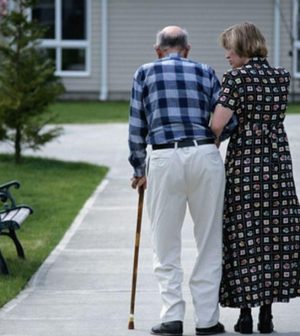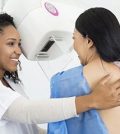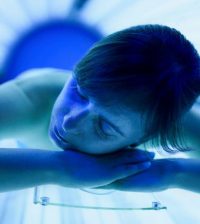- Could You Spot the Silent Symptoms of Stress?
- Gas Stoves Could Leave Your Lungs Vulnerable to Nitrogen Dioxide
- Key Therapy Equally Effective for Women, Men With Narrowed Leg Arteries
- Doctors Describe Texas Dairy Farm Worker’s Case of Bird Flu
- Does Preschool Boost Kids’ Long-Term Academic Success? Study Finds Mixed Results
- AI Might Spot Rare Diseases in Patients Years Earlier
- An Orangutan Healed Himself With Medicinal Plant
- Quit-Smoking Meds Not Working for You? Try Upping the Dose
- Fewer Americans Are Suffering Most Dangerous Form of Heart Attack
- Even Skipping Meat for One Meal Helps Liver Disease Patients
During the Holidays, Help Protect the Elderly from Falls

A holiday visit with older relatives might be a good chance to help them remove fall risks in their home, an expert suggests.
Older adults’ risk of falling may have increased during the pandemic due to declines in physical activity and mobility, along with increased isolation, a University of Michigan poll shows. Many also became more fearful of falling, which, in turn, can increase the risk.
“Taking steps now to reduce fall risk in their homes could prevent catastrophic injury and hospitalization,” said Geoffrey Hoffman, a fall researcher and assistant professor of nursing at the university.
Older people whose mobility declined during the first part of the pandemic were 70% more likely to say they’d had a fall in that time, and twice as likely to express a fear of falling, the poll revealed.
“Even if an older adult has gotten more active since getting vaccinated, their risk of falling could still be higher than it would have been if the pandemic hadn’t increased their inactivity or isolation,” Hoffman said in a university news release.
He offered some tips on fall-proofing older adults’ homes:
Rugs and mats: Cut pieces of non-skid material to fit underneath small throw rugs and mats. If they already have non-skid material, check that it still grips the floor. Throw rugs/mats should only be used on bare floors, not on top of carpet. Make sure bath mats have rubber backing in good condition.
Furniture placement: Offer to help move furniture and other objects to create wider walking paths.
Bathrooms: A grab rail in the tub/shower is a good idea, along with a rubber mat with suction cups or a stool with non-skid feet. If possible, a walk-in shower is much better than a tub.
Lighting: Dark hallways, stairways, closets with high shelves and outdoor steps are fall risk areas. Install brighter light bulbs or new fixtures that take multiple bulbs. Add motion sensors so lights come on automatically when someone enters the area, and consider night lights that come on when it gets dark or have a motion sensor.
Safe reaching: Encourage use of a folding step stool that has multiple steps and a high hand rail instead of a small stool or chair when seniors want to reach things on high shelves or change a light bulb, clock or smoke/carbon monoxide detector batteries.
Sensible storage: Help them reorganize storage to place items on lower shelves, even if they’re only used occasionally.
Railings and steps: Check railings on stairways and porch steps to make sure they’re securely anchored. If steps can become slippery, add stick-on traction strips.
Seasonal decor: Offer to bring holiday decorations and lights from the attic, an upstairs room or basement, and to help put them up.
Ice problems: Make sure older adults have a good supply of de-icer or sand to use on steps, walkways and driveways. For those who can’t easily lift a heavy jug, transfer the de-icer or sand to a container with a lid and add a scoop so they can scatter it more easily.
Snow removal: Make sure their snowblower is in good working order and that shovels, car scrapers and brushes are close at hand and in good shape. If an older person uses a shovel, it should have a back-saving handle to provide more stability when shoveling and prevent muscle strains.
More outdoor hazards: Make sure outdoor lights work and have automatic sensors. Check doormats to make sure they won’t slip. Clean gutters above entrances so melting snow doesn’t collect on steps and form ice.
More information
The U.S. National Institute on Aging has more about falls and fall prevention.
SOURCE: University of Michigan, news release, Nov. 22, 2021
Source: HealthDay
Copyright © 2024 HealthDay. All rights reserved.










